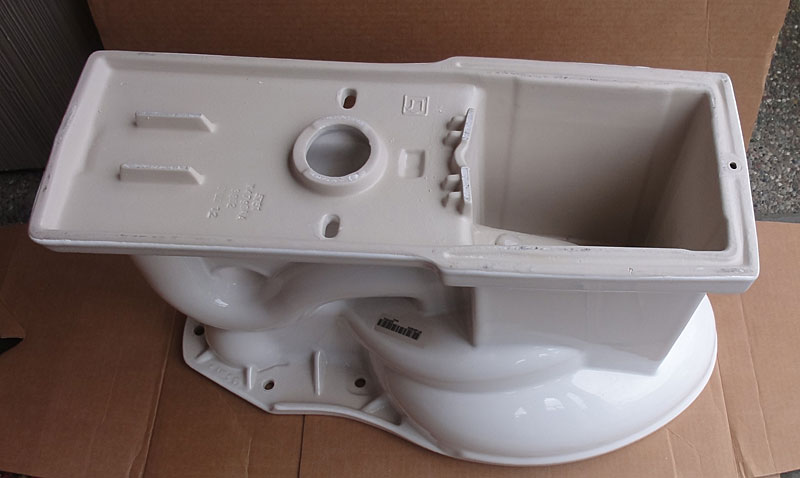kotofei
permanent gear evolution
Greetings,
Today I was distracted from listening to the music by my better half who found a leaking toilet. Indeed, it was some water at the left side of the toilet which re-appear after flushing.
We remodeled the first floor bathroom a year ago and I installed a toilet onto a new wax seal. I've had some difficulties with screwing the nut on the left metal rods that attach a toilet to the floor. Anyways, it was sort of OK until now.
I unscrewed nuts from both rods and removed the toilet; however, the left metal rod was lifted together with it. The rod detouched from the plastic seat on which the wax seal goes and the white seat itself is broken where it was.
Apparently, this white thing was broken for a while, the wax seal didn't hold the water and it leaked.
Now, how to fix all this? The white thing should be replaced since it's no way to re-attach the rod securely to it. Is it an easy job for DIY or it's better to have a pro do it?
Today I was distracted from listening to the music by my better half who found a leaking toilet. Indeed, it was some water at the left side of the toilet which re-appear after flushing.
We remodeled the first floor bathroom a year ago and I installed a toilet onto a new wax seal. I've had some difficulties with screwing the nut on the left metal rods that attach a toilet to the floor. Anyways, it was sort of OK until now.
I unscrewed nuts from both rods and removed the toilet; however, the left metal rod was lifted together with it. The rod detouched from the plastic seat on which the wax seal goes and the white seat itself is broken where it was.
Apparently, this white thing was broken for a while, the wax seal didn't hold the water and it leaked.
Now, how to fix all this? The white thing should be replaced since it's no way to re-attach the rod securely to it. Is it an easy job for DIY or it's better to have a pro do it?






